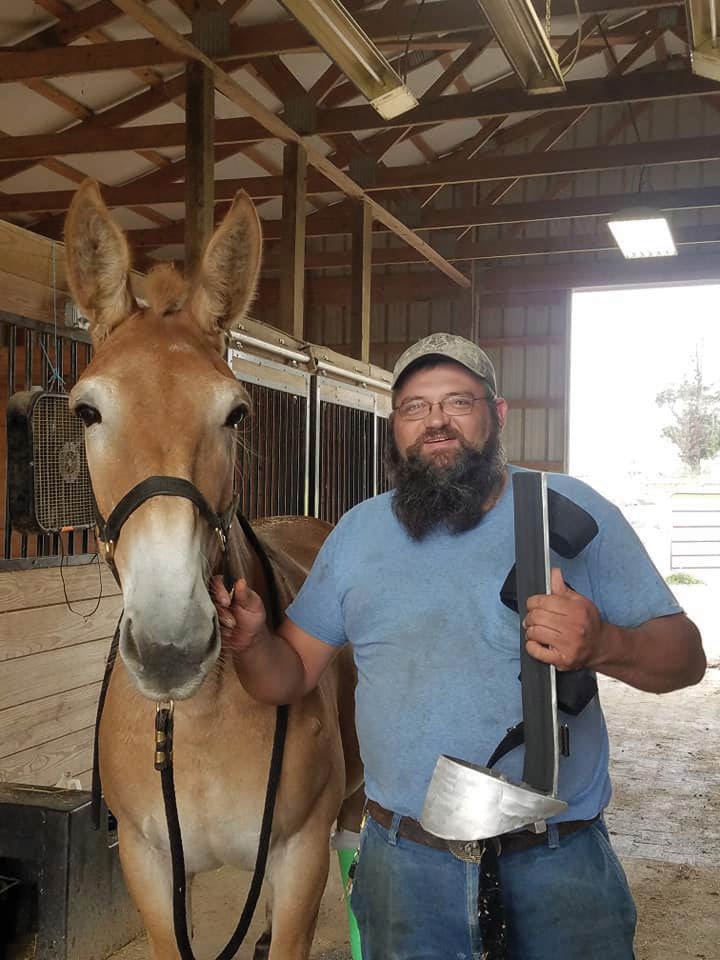
As the region’s leader in draft equine rescue for almost 15 years, Christine Hajek thought she had seen the very worst injuries and illness from neglect and abuse in working horses and mules.
Until she saw the hind leg of a young plow mule from Lancaster County last September.
“It was the worse injury I’d seen in a horse that was still alive,” said Hajek, founder and director of Gentle Giants Draft Horse Rescue in Mt. Airy, Md.
The lower half of the left hind leg of a female mule had been ripped apart, exposing eight inches of bone and severing a tendon.
Hajek sprang into action after a call from an Old Order Mennonite farmer saying his mule had been severely injured in a wire fence accident and asking if she could help.
The call came after the farmer transported the mule to the New Holland auction where she was rejected for sale because of the extent of her injuries.
Hajek said she called her veterinarian and asked her to watch a video of the mule walking, figuring they would have to buy her and euthanize her as they had done in cases of Amish and Mennonite work horses to spare them the suffering of a transport to the slaughterhouse.
But veterinarian Kim Brokaw of Walkersville Veterinary Clinic thought with the proper brace they might be able to save the mare.
The question was how?
They needed to find a way to keep the mule’s heel down and stretch the surviving tendon and there was nothing on the commercial market that fit the bill. And doing daily physical therapy on the leg by hand was out of the question.
“She was standing all the time with her foot cocked and you can’t have a horse standing on their toe,” said Hajek. “But commercial splints typically have the bar on the front of the leg, which was impossible given the location of her injury.”
Enter Smitty, the welder.
Bryan Smith, who runs Smitty’s Welding and Fabrication in New Windsor, Md., happened to be working on a stall door at the rescue when Hajek approached him with her problem.
“I told him we had an unusual situation involving a mule with a severe injury,” said Hajek. “And saving the leg was a matter of life and death.”
Smith told Fox 43 in Baltimore that he had experience designing metal prototypes for use on different machines but never for a living thing.
Little did he know, he’d have to apply MacGyver skills to this job. Smith sized up the mule and constructed a custom boot brace, using six-inch pipe, flat bars and straps.
“I saw the injury and knew something had to be done fast,” said Smith. “I’d made prototypes before but nothing that could change a life.”
The mule, who quickly became a stable favorite they named Sugar Snap Pea, did not protest the contraption. “She has a great disposition,” said Hajek, explaining she endured the boot for four hours a day for two months and allowed staff to do regular bandage changes on the deep, infected wounds.
Hajek thinks Sugar Snap Pea, who is between 10 and 12 years old, will recover enough to be able to be adopted and handle light riding duty one day.
Four months later Sugar Snap Pea was happily munching on alfafa cubes in her stall in the rescue’s rehab barn. The injured leg was still bandaged to protect the new skin growing back from her urge to scratch it.
For Smith it was a one-of-a-kind welding job he will never forget. “It means a lot to save this mule’s life,” he said.




